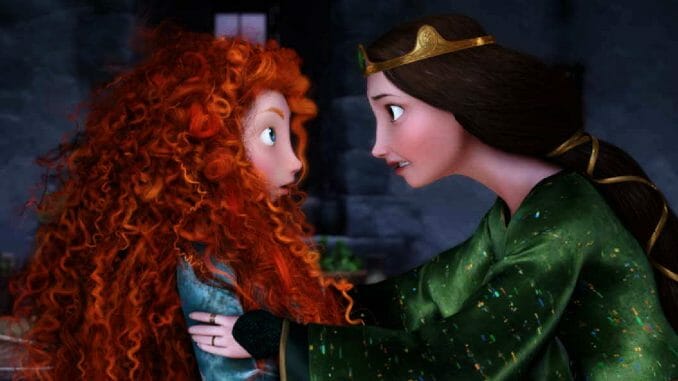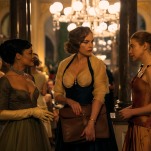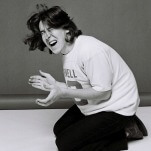Brave Remains Disney and Pixar’s Most Groundbreaking Princess Tale

Though Disney’s Pixar Animation Studios has released over two dozen films in the past 30 years, mainstream pop culture tends to only really remember a handful: Toy Story’s heartfelt tale of growing up, Monsters, Inc.’s colorful exploration of childhood fears, Finding Nemo’s delicately rendered underwater world, Up’s emotionally gutting opening minutes. (And though Ratatouille absolutely deserves way more respect than it gets, it’s fine if we never mention any of the Cars sequels ever again.) But one of the studio’s best films is not only somehow always left out of the larger conversation about the Pixar legacy, but far too many people also seem to have forgotten it exists at all.
Brave hit theaters ten years ago, in June of 2012. It was the first Pixar movie to feature a female protagonist, the first to credit a female director and the first to have women credited as screenwriters. It was also the studio’s first—and remains its only—princess film (a familiar staple in the House of Mouse). Brave broke multiple barriers, yet it is rarely remembered for doing so, remaining one of Pixar’s most underrated and underappreciated gems.
Set in medieval Scotland, Brave follows the story of Merida, the firstborn of Clan DunBroch, and a princess who wants more from her life than she’s been told she’s allowed to have. (So far, so familiar, right?) But although Disney has told plenty of stories about princesses, rarely have they looked like this one, a tale that explicitly rejects the fairytale tropes of marriage and happily ever after in favor of empowering its heroine to not just choose her own fate, but thrive on her own. Royal by birth and deeply uninterested in the role traditionally ascribed to her by her gender, Merida is unlike any heroine that had come before her and one which few that came after her can match.
-

-

-

-

-

-

-

-

-

-

-

-

-

-

-

-

-

-

-

-

-

-

-

-

-

-

-

-

-

-

-

-

-

-

-

-

-

-

-

-








































